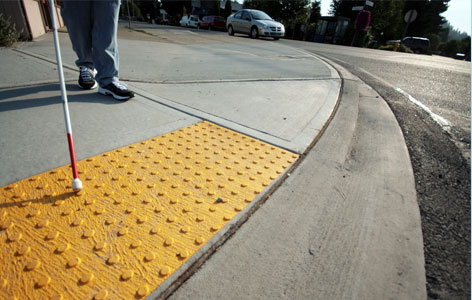Home page Description:
How the central nervous system responds to injury may play a role in neurodegenerative disease.
Posted On: January 04, 2017

Image Caption:
After damage to the retina in the eye, reactive gliosis is initiated. This process, although important for repair, can have dire consequences on vision and, in some cases, can lead to blindness.
Unlike other parts of the body, damage to the brain, spine and eye (ie, the central nervous system) leads to a specialized inflammatory response. This immune response is termed ‘reactive gliosis’ and involves helper cells, known as astrocytes.
During reactive gliosis, astrocytes become activated and produce proteins called type III intermediate filaments—a process that occurs in nearly all neurodegenerative diseases, including Alzheimer disease, Parkinson disease, stroke, diabetic retinopathy and glaucoma. Despite the common involvement of these intermediate filaments in the damage response, the specific role of these proteins in the balance between health and disease remains unclear.
The basic working unit within the central nervous system is known as a neuron; thus, promoting neuron survival is vital. Using the neurons within the retina of the eye as a model system to study neurological damage, Krembil Scientist Dr. Jeremy Sivak and his team studied the effect of blocking the production of type III intermediate filaments on neuronal survival. The team injected a specific inhibitor of type III intermediate filaments, known as withaferin (WFA), into injured eyes that were actively undergoing reactive gliosis. They found that WFA injection prevented reactive gliosis and protected neurons.
“To our knowledge, this is the first study to demonstrate that injecting small molecule drugs, such as WFA, into a living system can inhibit intermediate filament dynamics and protect neurons from the negative effects of reactive gliosis,” says Dr. Sivak. “Knowing how to control the body’s own responses to injury could enable scientists to create new treatments that prevent cell death or promote recovery in chronic disease.”
This work was supported by the Canadian Institutes of Health Research, the Glaucoma Research Society of Canada, the National Science and Engineering Research Council, and the Toronto General & Western Hospital Foundation. J Sivak is the Toronto General & Western Hospital Foundation Glaucoma Research Chair.
Pharmacologic inhibition of reactive gliosis blocks TNF-α-mediated neuronal apoptosis. Livne-Bar I, Lam S, Chan D, Guo X, Askar I, Nahirnyj A, Flanagan JG, Sivak JM. Cell Death and Disease. doi:10.1038/cddis.2016.277. 2016 Sep 29. [PubMed abstract]
During reactive gliosis, astrocytes become activated and produce proteins called type III intermediate filaments—a process that occurs in nearly all neurodegenerative diseases, including Alzheimer disease, Parkinson disease, stroke, diabetic retinopathy and glaucoma. Despite the common involvement of these intermediate filaments in the damage response, the specific role of these proteins in the balance between health and disease remains unclear.
The basic working unit within the central nervous system is known as a neuron; thus, promoting neuron survival is vital. Using the neurons within the retina of the eye as a model system to study neurological damage, Krembil Scientist Dr. Jeremy Sivak and his team studied the effect of blocking the production of type III intermediate filaments on neuronal survival. The team injected a specific inhibitor of type III intermediate filaments, known as withaferin (WFA), into injured eyes that were actively undergoing reactive gliosis. They found that WFA injection prevented reactive gliosis and protected neurons.
“To our knowledge, this is the first study to demonstrate that injecting small molecule drugs, such as WFA, into a living system can inhibit intermediate filament dynamics and protect neurons from the negative effects of reactive gliosis,” says Dr. Sivak. “Knowing how to control the body’s own responses to injury could enable scientists to create new treatments that prevent cell death or promote recovery in chronic disease.”
This work was supported by the Canadian Institutes of Health Research, the Glaucoma Research Society of Canada, the National Science and Engineering Research Council, and the Toronto General & Western Hospital Foundation. J Sivak is the Toronto General & Western Hospital Foundation Glaucoma Research Chair.
Pharmacologic inhibition of reactive gliosis blocks TNF-α-mediated neuronal apoptosis. Livne-Bar I, Lam S, Chan D, Guo X, Askar I, Nahirnyj A, Flanagan JG, Sivak JM. Cell Death and Disease. doi:10.1038/cddis.2016.277. 2016 Sep 29. [PubMed abstract]




